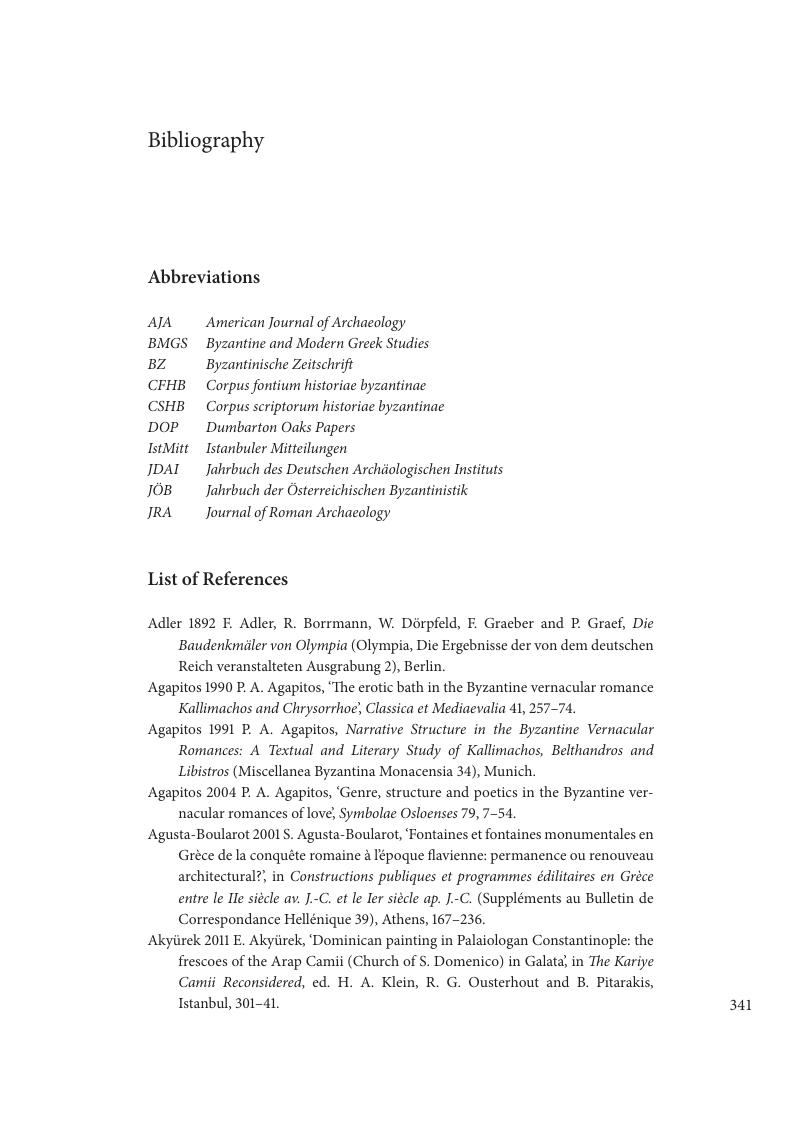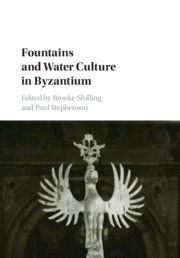Book contents
- Fountains and Water Culture in Byzantium
- Fountains and Water Culture in Byzantium
- Copyright page
- Contents
- Illustrations
- Contributors
- Introduction
- 1 Where do we go now? The archaeology of monumental fountains in the Roman and early Byzantine East
- 2 Monumental waterworks in late antique Constantinople
- 3 Fistulae and water fraud in late antique Constantinople
- 4 The Silahtarağa statues in context
- 5 The bronze goose from the Hippodrome
- 6 The Serpent Column fountain
- 7 The culture of water in the ‘Macedonian renaissance’
- 8 When bath became church: spatial fusion in late antique Constantinople and beyond
- 9 Zoomorphic rainwater spouts
- 10 Spouts and finials defining fountains by giving water shape and sound
- 11 Fountains of paradise in early Byzantine art, homilies and hymns
- 12 Where did the waters of Paradise go after iconoclasm?
- 13 ‘Rejoice, spring’: the Theotokos as fountain in the liturgical practice of Byzantine hymnography
- 14 Words, water and power
- 15 Ancient water in fictional fountains: waterworks in Byzantine novels and romances
- 16 The shrine of the Theotokos at the Pege
- 17 A dome for the water: canopied fountains and cypress trees in Byzantine and early Ottoman Constantinople
- 18 Sinan’s ablution fountains
- Bibliography
- Plate Section (PDF Only)
- Index
- References
Bibliography
Published online by Cambridge University Press: 20 October 2016
- Fountains and Water Culture in Byzantium
- Fountains and Water Culture in Byzantium
- Copyright page
- Contents
- Illustrations
- Contributors
- Introduction
- 1 Where do we go now? The archaeology of monumental fountains in the Roman and early Byzantine East
- 2 Monumental waterworks in late antique Constantinople
- 3 Fistulae and water fraud in late antique Constantinople
- 4 The Silahtarağa statues in context
- 5 The bronze goose from the Hippodrome
- 6 The Serpent Column fountain
- 7 The culture of water in the ‘Macedonian renaissance’
- 8 When bath became church: spatial fusion in late antique Constantinople and beyond
- 9 Zoomorphic rainwater spouts
- 10 Spouts and finials defining fountains by giving water shape and sound
- 11 Fountains of paradise in early Byzantine art, homilies and hymns
- 12 Where did the waters of Paradise go after iconoclasm?
- 13 ‘Rejoice, spring’: the Theotokos as fountain in the liturgical practice of Byzantine hymnography
- 14 Words, water and power
- 15 Ancient water in fictional fountains: waterworks in Byzantine novels and romances
- 16 The shrine of the Theotokos at the Pege
- 17 A dome for the water: canopied fountains and cypress trees in Byzantine and early Ottoman Constantinople
- 18 Sinan’s ablution fountains
- Bibliography
- Plate Section (PDF Only)
- Index
- References
Summary

- Type
- Chapter
- Information
- Fountains and Water Culture in Byzantium , pp. 341 - 383Publisher: Cambridge University PressPrint publication year: 2016



